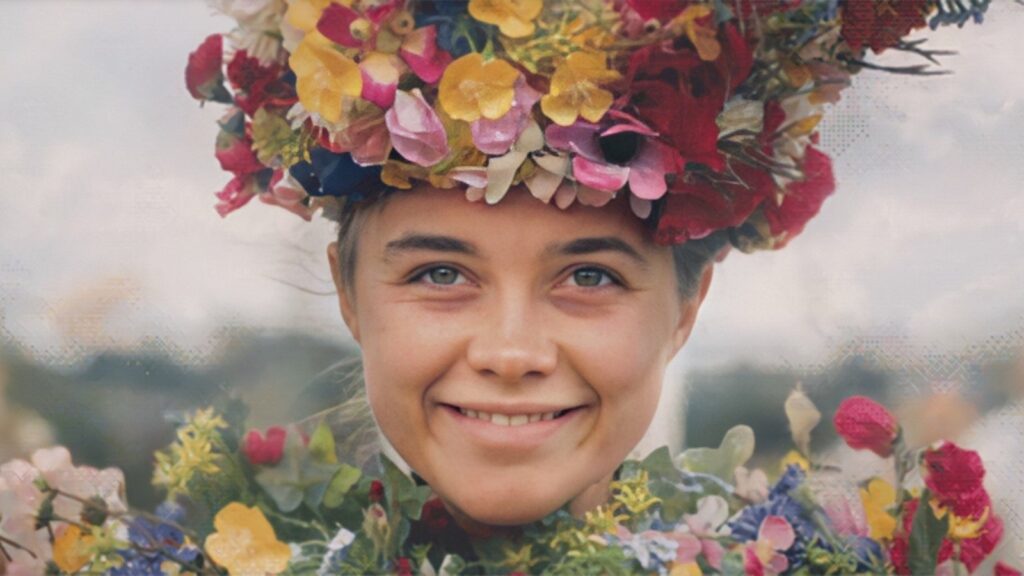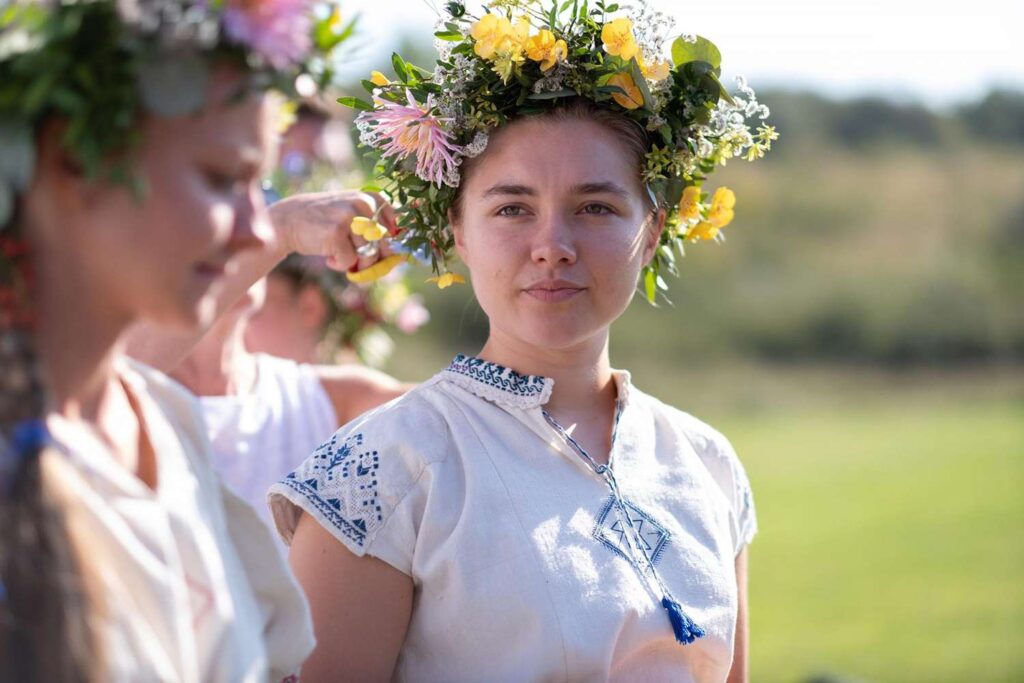Ari Aster’s Midsommar isn’t just a horror movie – it’s a breakup film wrapped in folk horror, trauma, and surreal daylight terror. From its unsettling opening to its fiery, cathartic conclusion, the film leaves viewers with a lot of questions. Why did Dani’s parents die? What’s the deal with the bear suit? And what does that final, eerie smile really mean?
Let’s break it all down.
Is Midsommar Based on a True Story?

Not exactly. Ari Aster has confirmed that Midsommar is deeply personal, but it’s not based on any real events. He wrote the film after a painful breakup, using the story as a way to explore toxic relationships and emotional devastation.
“This is my attempt to make a big film about separation,” Aster explained. “I wanted to convey that feeling when it seems like the end of the world has come.”
So while Midsommar isn’t autobiographical, its emotional core comes from a very real place.
Are the Rituals in Midsommar Based on Real Swedish Traditions?
Sort of. The real Midsummer Festival in Sweden is a lively celebration with flower crowns, dancing, and feasting – not human sacrifice.
However, Aster and his team pulled from various Scandinavian folklore and myths to create the film’s eerie traditions.
Attestupa: The disturbing elderly cliff-jumping ritual was inspired by old (and mostly debunked) Scandinavian legends.
The Hårga Song: The myth about a devilish fiddler making villagers dance until they die is real Swedish folklore.
Runes and Symbolism: The runes seen throughout the film were researched with the help of experts and hold real meanings tied to fate and sacrifice.
But the bear sacrifice? That one’s all Aster’s creation.
Why Was Christian Burned in a Bear Suit?

Christian’s fate is one of the film’s most shocking moments – drugged, paralyzed, and stuffed into a hollowed-out bear carcass before being burned alive.
The bear is a powerful symbol in Norse mythology, often representing wild, untamed nature. In Midsommar, it’s used to strip Christian of his identity before he’s sacrificed.
For Dani, Christian’s death represents a final, brutal severing of their toxic relationship. She’s no longer the abandoned, emotionally neglected girlfriend – she’s the May Queen, fully accepted into the Hårga community.
Which leads us to…
Why Does Dani Smile at the End?
Dani’s final expression is one of Midsommar’s most haunting images – her face slowly shifts from devastation to a wide, unsettling smile as Christian burns.
So, what does it mean?
Drug-Induced Euphoria: Before the final ritual, Dani drinks a hallucinogenic tea, heightening her emotions.
A Newfound Family: Throughout the film, Dani has been searching for belonging. The Hårga cult accepts and embraces her, unlike Christian.
Madness and Liberation: Aster himself explained that Dani’s smile represents a terrifying, manic kind of freedom – she’s finally let go, but at what cost?
Did Pelle Kill Dani’s Parents?
One of the biggest fan theories suggests that Pelle, the friendly Swedish guide, orchestrated Dani’s tragedy from the start.
The theory goes like this:
Pelle saw Dani as the perfect May Queen – someone isolated, grieving, and vulnerable.
He subtly manipulates her throughout the film, pointing out Christian’s neglect and making her feel safe with him.
Some fans believe he may have even arranged the deaths of Dani’s family, ensuring she would be emotionally dependent on the Hårga.
While Aster has never confirmed this, it adds an even more sinister layer of predestination to the story.
What Happens to Dani After the Film Ends?
Midsommar leaves Dani’s fate open-ended, but there are a few possibilities:
She stays in the Hårga and thrives as the May Queen. Some believe she’s fully accepted into the cult and will live out her days in their traditions.
She’s used for breeding. The Hårga need outsiders to mix the bloodline, which means Dani could be part of their future rituals.
She’ll eventually meet the same fate as the elders. At 72, Dani could be expected to jump off a cliff, just like the elders before her.
Whatever happens, it’s clear that Dani is no longer the same person – she’s become something else entirely.
So, Is Dani the Villain or the Victim?
Aster doesn’t give us a clear answer, and that’s what makes Midsommar so unsettling.
Dani is undeniably a victim. She’s emotionally neglected, manipulated, and thrown into a horrifying situation.
But by the end, she’s complicit in Christian’s murder. She doesn’t just watch – she chooses.
Aster himself has said that while Dani finds a kind of peace, she’s also trading one toxic relationship for another. The Hårga love-bomb her, then trap her in their world – she hasn’t truly escaped anything.
Final Thoughts
Midsommar isn’t just a horror movie – it’s a psychological spiral, a breakup allegory, and a folk horror nightmare all at once. Its daylight horror, unsettling rituals, and gut-wrenching emotional weight make it one of the most unforgettable films of the decade.
Whether you see Dani as a tragic hero or a terrifying villain, one thing’s for sure – her journey is disturbing, hypnotic, and impossible to look away from.
Would you survive Midsommar? Let’s hear your theories in the comments.
